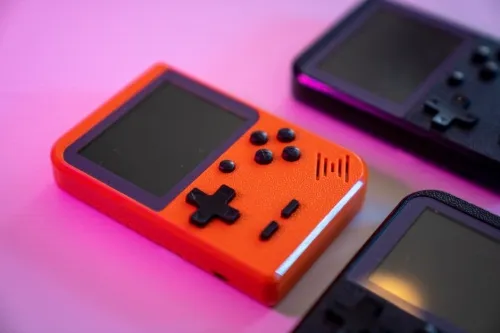Enthusiast game makers and hobbyists who cherish the classic Game Boy have a fascinating new book to delve into. Game Boy Coding Adventure, the newest edition from No Starch Press, a publisher renowned for instructional books regarding technology and gaming. This extensive, 456-page volume guides you on how to create Game Boy games, not by utilizing contemporary tools like GB Studio; rather, this serves as a guide for programming games and hardware operations in assembly language, similar to what developers did in the early ’90s.
Game Boy Coding Adventure is available for $50 in paperback and $35 on Kindle.
Game Boy Coding Adventure
$50
Game Boy Coding Adventure was authored by seasoned professional Maximilien Dagois. It is presented as a thorough manual for Game Boy programming, highlighted by the subtitle: Learn Assembly and Master the Original 8-Bit Handheld.
Not only is it focused on coding and creating games. You’ll explore what makes the Game Boy function and its interaction with cartridges. Primarily centered on the classic Game Boy DMG and Game Boy Pocket, the volume also includes segments on GBC, Super Game Boy, and accessories such as the Game Boy Printer.
The technical restrictions of the Game Boy compelled game developers to use assembly language, which lacks a fixed programming language identity like Java or C++. Assembly operates as a comprehensible form of binary machine code, allowing Game Boy developers to engage directly with the handheld’s processing chip.
Game Boy Coding Adventure instructs you on how to compose and troubleshoot code using RGBDS, the prominent open source assembler for GB and GBC software and hardware initiatives. You’ll discover information on frame pacing, control programming, and generating sound channels. Subsequent chapters probe deeper subjects such as memory banking and serial communication.
The Game Boy’s 8-bit visuals consist of a collection of 8×8 tiles. The book elucidates everything concerning tiles and their arrangement by VRAM into backgrounds, windows, color palettes, and sprites–as well as how to animate those sprites. Every project featured in this volume operates on authentic Game Boy hardware.
It’s quite remarkable that this book has been created and distributed by No Starch Press, a publisher noted for its strong history in tech and gaming instructional books. Previously, No Starch Press published a well-received beginner’s guide to modding Game Boy hardware. If you’re keen on entering the Game Boy modding community, you can acquire the 256-page paperback version for $25.
No Starch Press has released volumes covering a vast array
of coding languages and gaming development resources. Create Your Own Computer Games with Python ranks among the publisher’s most favored game development literature. Additionally, there’s Mission Python, which instructs adolescents on designing a space adventure game. No Starch Press is well-acquainted with specialized game development resources too. There are manuals on crafting interactive, text-driven adventures with Twine and puzzle-platformers using PuzzleScript. The publisher also offers an entire collection of books on Scratch, the widely-used block-based coding language developed by MIT Media Lab.
Other Game Boy volumes deserving of a spot in your library include The Game Boy Encyclopedia and The History of the Game Boy. The Game Boy Encyclopedia by Chris Scullion documents every title launched in North America and Europe for both GB and GBC; the hardcover version is reduced to $24 (previously $43) on Amazon. The History of the Game Boy offers an (unofficial) behind-the-scenes perspective on the development of the Game Boy and its timeline from 1989-1998. Authored by Florent Gorges, this thoroughly-researched book relies on discussions with developers involved in the Game Boy’s creation. It was made available in English for the first time along with The History of the Famicom/NES last September.
Speaking of NES, a publication dedicated to mastering the 8-bit home console’s 6502 Assembler language came out last year. Classic Game Programming on the NES is priced at $40.47 (was $50) on Amazon. You might also want to explore the Code the Classics series, which guides you on creating retro games utilizing Python and Pygame Zero. Code the Classics Volume 1 shows you how to develop games influenced by classics from the ’70s and early ’80s, while Volume 2 concentrates distinctly on the ’80s. The second editions of both volumes were launched by Raspberry Pi Press last summer. Code the Classics instructs you in Python and Pygame Zero game creation.
Subscribe to GameSpot’s Weekly Deals Newsletter:
Have a news tip or wish to get in touch with us directly? Email news@gamespot.com


